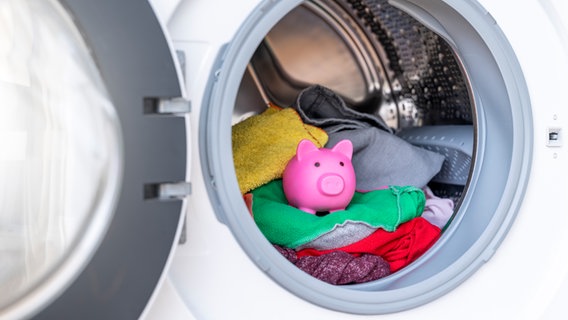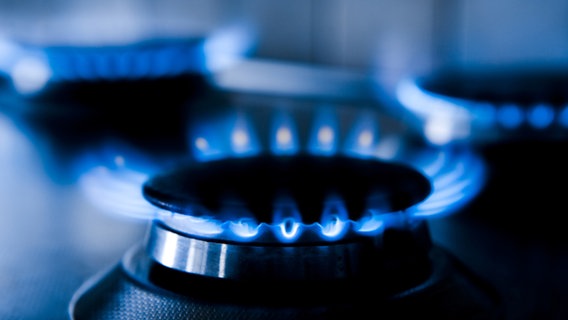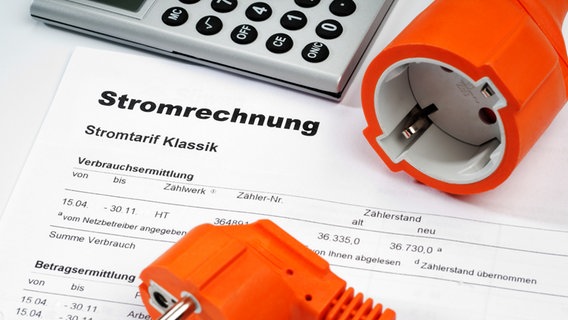Status: 03/03/2023 6:48 p.m
Whether refrigerator, dishwasher or kettle: Electrical household appliances consume a lot of energy. A lot can be saved here with small changes, sometimes it is even worth buying a new one.
Cooling and freezing alone account for up to 20 percent of household electricity requirements. Very old refrigerators, such as devices that date back to the 1990s, are better off exchange, recommends Florian Lörincz, energy consultant at Lower Saxony Consumer Advice Centre. With a modern device, which currently costs around 600 to 800 euros, you can save around 80 euros a year compared to an old device, so that the acquisition costs are amortized after around eight to ten years.
Don’t choose a fridge that is too big
Refrigerators should match the number of people in the household. If they are too big, they consume an unnecessarily large amount of electricity.
When buying a new refrigerator, you should pay attention to the new classification that has been in force since 2021: refrigerators that were classified in efficiency class “A+” before the changeover are in category “C” after the new classification. The most economical new models have efficiency class A. You should also pay attention to the size, because models that are too large consume electricity unnecessarily. One- or two-person households usually get by with 100 to 150 liters of useful capacity, for each additional person you can count on another 50 liters. On the other hand, whether the fridge is full of food or not has little effect on energy consumption.
Fridge: Temperature of 7 degrees is optimal
So that the food is sufficiently chilled and at the same time not too much energy is consumed, the refrigerator should have a The Federal Environment Agency recommends having a temperature of seven degrees. Every degree cooler costs electricity. In older refrigerators, this temperature is already reached at level 1 or 2. If the device does not have an exact temperature display, you can also measure the temperature with a standard thermometer and adjust the level accordingly. If a layer of ice forms in the refrigerator, it should be defrosted.
Dishwasher saves energy and water
If you use a dishwasher instead of washing the dishes by hand, saves both water and energy. On average, it costs 40 euros a year, and if you wash by hand, you pay about twice as much. Elena Gellermann from the Schaumburg Energy Agency calculated that a full dishwasher consumes around 10 liters per wash cycle, and around 70 liters by hand. Even more energy can be saved if you can connect the machine to a hot water supply.
Wash energy-saving
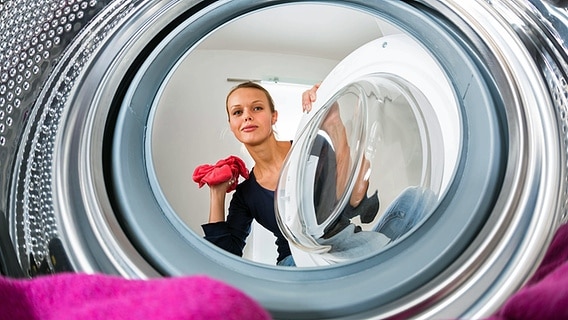
Washing temperatures above 40 degrees are usually unnecessary. Often even 20 degrees are sufficient.
Loud is enough for lightly to normally soiled laundry Consumer Center Temperatures of 20 to 40 degrees Celsius mostly out. The washing machine should only be washed at 60 degrees once a month for hygiene reasons. It is also important to always fully load the machine – this saves detergent, electricity and water. According to the consumer advocates, the automatic loading system is of little help because it only adjusts the water consumption and this remains relatively high.
Tumble dryers use a lot of electricity
Tumble dryers are one of the biggest energy guzzlers in the home. If you don’t want to do without it, you should take a modern dryer with you Use heat pump technology. These devices use half the electricity of condenser dryers. However, depending on the intensity of use, this is still up to 250 kilowatt hours per year.

Free alternative to the tumble dryer: the classic clothesline.
Combinations of washing machine and dryer have a particularly unfavorable energy balance. Special dryers are often installed in these devices, which not only consume a lot of electricity, but also water to cool the resulting water vapor. Another disadvantage: combination devices can often only dry part of the laundry load in one go. Line and drying rack are free alternatives.
Save energy when cooking and baking
Basic rule when cooking: If possible, one Put the lid on the pot. That reduces the energy costs for cooking by around 50 percent, explains energy consultant Lörincz. A positive side effect: the food is usually cooked a little faster. Eggs you can steam instead of boiling them: To do this, add only about two centimeters of water to the saucepan so that the eggs are about half covered. The cooking time remains the same, but the water heats up faster, which in turn saves energy.
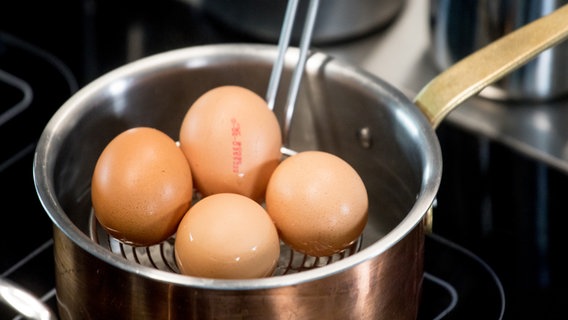
Steaming eggs instead of boiling them requires very little water – and saves energy.
When baking, if possible Use recirculation level. The hot air is distributed more evenly in the oven. The food cooks at lower temperatures than with top or bottom heat – this reduces energy costs. However, the convection function is not equally suitable for all dishes. Cakes and roasts, for example, quickly lose moisture and quickly become too dry.
Use a kettle instead of a kettle
Kettles have the advantage that you don’t have to heat the stovetop and kettle at the same time. The saves electricity – but only if you don’t heat too much water. It is best to only heat exactly the required amount – for example by measuring the water beforehand.
Replace incandescent and halogen lamps
Old incandescent bulbs or halogen bulbs should be replaced with LED bulbs replace ones that use up to ten times less electricity. A quick check of all rooms, including the basement, is worthwhile here. The conversion is also worthwhile because LED lamps are usually quite durable.
Further information


